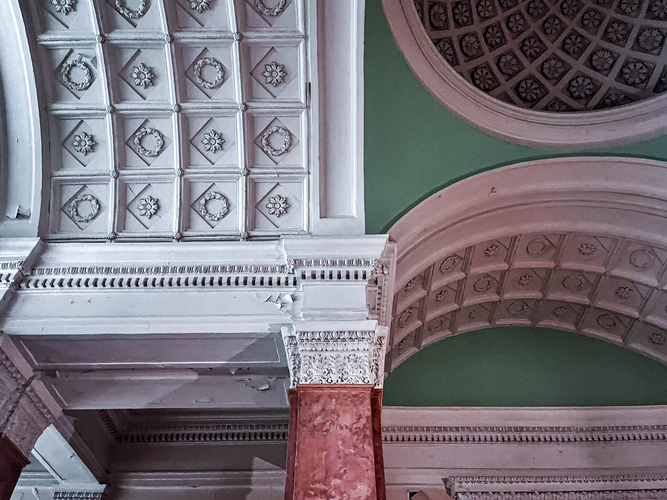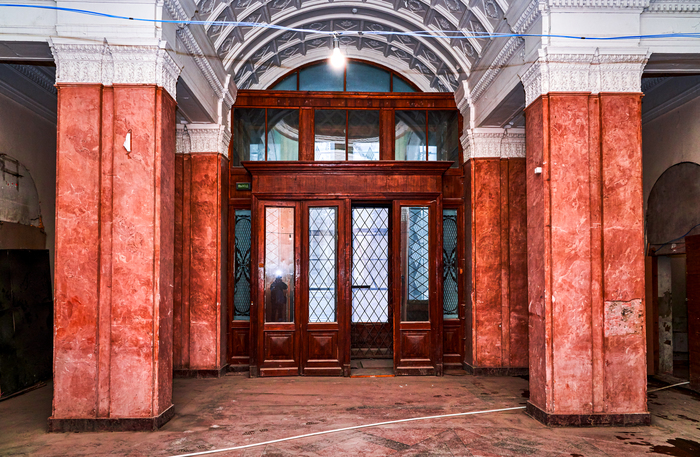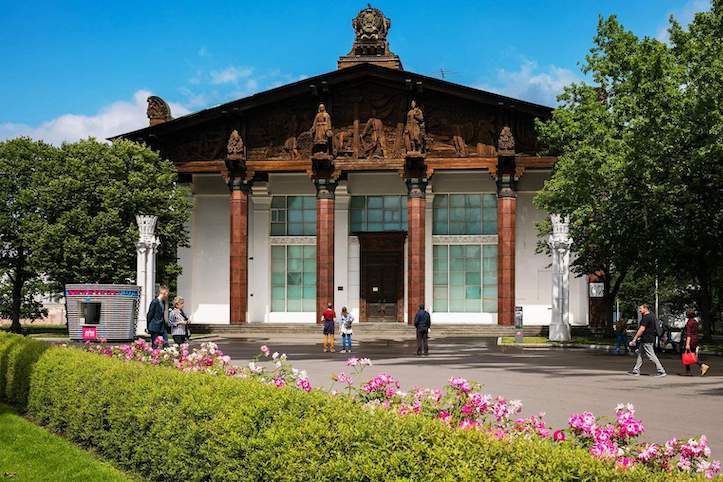Science-based restoration is one of the most complex and specialised areas of construction. With its requirements for authentic technology, like-for-like materials, and strict adherence to the no-harm principle, cultural heritage work is one of the most demanding activities in the construction industry in terms of responsibility. Restoration works require high levels of competence, and MSU-1 GC team can boast expertise in this field.
The Company’s most significant science-based restoration projects are several landmark buildings at VDNH. It is the largest exhibition, museum, and recreational park in the world, serving as a symbol of Moscow and a major attraction for tourists from all over the country and abroad. Today, we are seeing an urgent need to preserve the architectural heritage of the exhibition park while possibly adapting the buildings to modern needs.
One of MSU-1 GC’s hallmark projects was the restoration of the Cosmos pavilion (designed by architects Viktor Andreyev and Ivan Taranov and known as the Mechanisation pavilion from 1939 to 1959). The Company completed a full range of renovation and restoration works in just 14 months – a highly compressed timeframe. MSU-1 GC is now working on three projects: the Tsentrosoyuz and Karelia pavilions and the Golden Spike restaurant.
Apart from VDNH, MSU-1 GC is working on other landmarks, such as the restoration project for the Sheremetev estate on Romanov Lane, in progress since December 2021.


Address:
Moscow, Mira Avenue 119, Building 61 (VDNH)
Start of construction:
April 2022
End of construction:
July 2023
MSU-1 GC is currently adjusting the design of the pavilion building; the restoration project is to be approved by the Department of Cultural Heritage of Moscow and undergo a state historical and cultural expert review. The full range of works includes restoration of the unique stucco decorations per archival records, restoration and gilding of the spire, restoration of sculptures, and restoration and rebuilding of ceramic fountains.
70% of restoration work is performed by the Group in-house, and for some tasks, subject specialists are invited.
The restoration involved many complex and innovative technical solutions. For example, when working on the façades, MSU-1 GC specialists exposed the historic layer with the help of special removers and fully duplicated the composition of the two types of original terrazzite plaster with its unique grain structure. Another task was to restore the stucco decorations, which required full compliance with the original manufacturing techniques and recreation of the authentic visual design. Since less than 30% of the pavilion stucco decorations were preserved, the restoration required a careful study of its elements from archival photos.
To restore the interior stucco as accurately as possible, a temporary workshop was set up at the pavilion for the project, where MSU-1 GC workers were able to recreate the lost decorative elements, bas-reliefs, medallions, and the coffered ceiling. In the course of works, the decorations were carefully removed and cleaned, and the missing stucco elements were cast from a special authentic plaster. To identify cracks and the most fragile elements, a 3D scanner was used. In addition, loose and damaged bricks in the walls were replaced, with all wooden rafters reinforced and treated with fire retardants and wood preservatives. The works also included the restoration of previously bricked-up windows and the original geometry of the room. The final stage of the project will be the restoration of the pavilion interior and the ceramic fountain as well as the building spire, which will also be re-gilded.


Address:
Moscow, Mira Avenue 119, Building 284 (VDNH)
Start of construction:
February 2022
End of construction:
May 2024
MSU-1 GC is restoring the Golden Spike restaurant, a cultural heritage site of federal significance (designed by architect Andrey Yefimov and known as the Main Restaurant until 1954). At the project, the Company acts as both the project designer and the contractor for the full range of works. The project goals are to preserve and restore as many architectural and decorative elements that are integral to the original design as possible.
For the project, MSU-1 GC completed a series of emergency preparedness measures in-house. In addition, the façade walls were reinforced by injecting, under pressure, a special bonding mortar through process openings to impregnate the walls and protect them from further degradation.
A comprehensive restoration of the pavilion building is scheduled for the second quarter of 2023. This called for Company specialists to study the building condition, probe and scan the walls, and propose a number of design solutions to breathe new life into the landmark building.


Address:
Moscow, Mira Avenue 119, Building 67 (VDNH)
Start of construction:
March 2023
End of construction:
March 2024
MSU-1 GC is restoring the Karelia pavilion located at VDNH. The pavilion features a carved pediment with bas-reliefs and sculptures and a carved front door. Notably, its façade, laden with wooden elements, would be a real challenge for any restorer. The smaller pediments above the side entrances and the roof, which is made of natural larch and has carved rafters, also have a great architectural value. The façade and the interior of the building are additionally decorated with stucco elements.
Project phase 1 involves a mycological inspection to check the wood for fungi and map losses and defects. The project team is selecting the materials (remover, restoration mortar, etc.) and thoroughly studying historical documents to detail the building interior.
The next step will be the roof restoration, which will be focused on preserving the rafters as much as possible, just as for the Tsentrosoyuz pavilion restoration project. Façade restoration began in May 2023. The pediment will be covered by a temporary roof for additional protection.
MSU-1 GC’s restoration engineering team will inspect the foundations and walls of the pavilion and prepare restoration and reinforcement solutions.